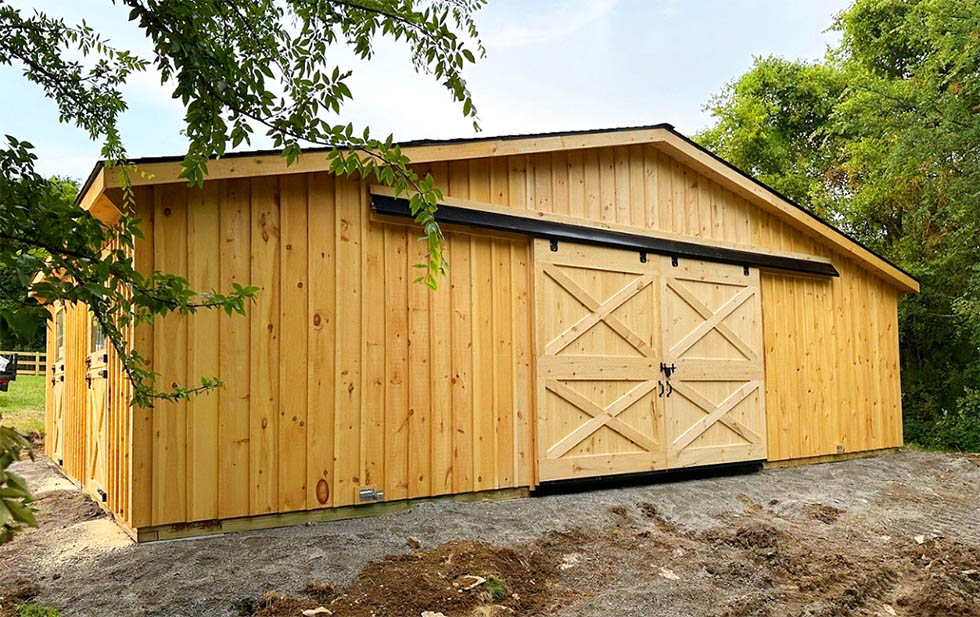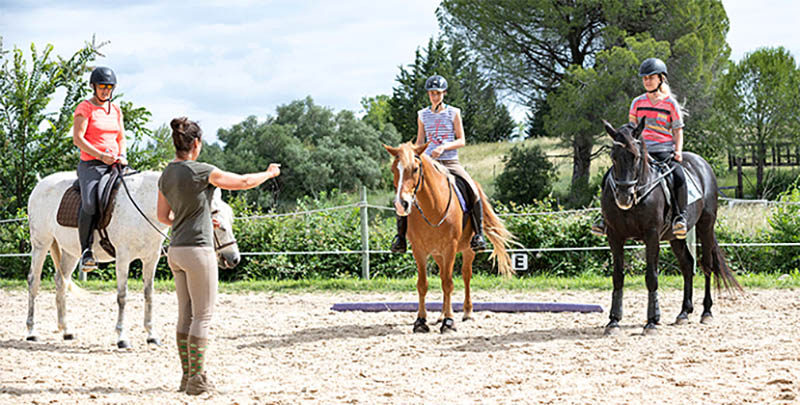When the weather forecaster brings news of impending hurricanes or severe weather, the horse caregiver needs to take charge of how to best manage and hurricane-proof their barns for the safety of their beloved equines.
While having an evacuation plan for dire emergencies is always a good idea, many extreme weather events are managed at home on the farm. A horse owner’s reluctance to move horses elsewhere is understandable, and outside of imminent fire threat or flood event most horse barn operators will keep the facility open and horses on site in most inclement weather instances.
But that doesn’t mean the doors to the barn are literally left open. The need to batten down the hatches is very real and ideally the barn will have design features that make this option easy and fast to accomplish.
There are instances when horses may be purposely left outside to weather the storm. Particularly if their environment is securely fenced and is free of trees and likely sources of flying debris. The latter is the leading cause of injury to horses during high wind events. Being able to bring the horses into a well-built barn to ride out the storm is a boon.
Similarly, during wild and windy North-East snowstorms or deluges of precipitation from atmospheric rivers, the desire to bring the horses inside for shelter and ease of management for feeding and care is heightened.
Check out these structural building upgrades in the article, “Hurricanes May Hardly Ever Happen,” to be well-prepared in case they do.
During winter ice and snowstorms and high precipitation weather events, the duration of the storms can extend for days at a time. The idea of leaving horses out to care for themselves is not usually the choice for those horse owners caring for young or elderly horses or smaller Equus with less leg length that find snow hard to navigate. Equestrian competitors and horse breeders alike do not generally regard keeping their performance horses or breeding stock out in the field where their risk of injury or illness is increased due to bad weather, a good idea either.
Hurricane proof barns can be designed to make it easy to ‘batten down the hatches’ and increasingly horse property owners are opting to include these features in their barn builds to mitigate the risks for flooding, roof collapses, wind damage and the like.
Here are a few barn design and site selection tips to consider when building or renovating a horse barn:
Door Designs and Placement
The use of overhead doors for barn entryways where sliding doors pose a risk for freezing to the floor or are prone to high wind are a great idea. Any overhead door system should have both an internal and external manual override system in case of power outages that is accessible from both inside and outside the building.
Where sliding doors are used install interior bolts to each side that secure them to the wall when closed. Ensure there is a secure central footer at the base of doors where they meet together to keep the doors from lifting during high winds, with an interior bolt that connects both entry doors together when closed.
Avoid use of glass in entry doors if sliding doors are used. Instead opt for solid wood doors.
Install interior bolts for closing Dutch doors from the inside of the building versus outside. This not only makes it easier and more convenient to secure the building from the inside instead of walking around outside. It also offers better overall security for the building against theft and nefarious intruders.
Closing outside bolts of Dutch doors can also be implemented for extra secure closure, but the downside is these cannot be quickly opened in time of emergencies.
The addition of an overhang to the outside of the building that shelters the exterior Dutch doors of stalls or the closed wall face of the barn, can help defray blowing snow and wind from the building’s wall surfaces. But the overhang should be sturdily built and properly attached to the main structure of the horse barn. The overhang’s support system should be securely installed to the appropriate depth to prevent them being pulled out of the ground or moving.
The overhang itself should be designed at an angle/pitch sufficient to shed snowfall and prevent it from accumulating on the roof surface. Use of metal over shingle roofing material is an effective method to achieve this in high snowfall areas as metal roofs require less pitch angle than a shingle roof to achieve snow shedding.
Protect Your Stuff
The addition of a loft to the horse barn with full size stairway to access the storage space is a great location to store valuable tack and equipment and keep it protected from any risk of flooding.
It is also a straightforward task to create an easy access interior storage area on the ground floor of the barn where motorized equipment such as UTVs, garden furniture, mounting blocks etc. can be quickly moved without the need to lug them to the house and downstairs to a basement or other area.
Wise Window Styles
Install tempered glass in stable/stall windows and/or provide functioning exterior shutters to protect the windows from damage and possible blow outs during extreme winds. Decorative shutters are commonly included in barn design packages but making them functional can be a boon during times when hurricane/tornado watches and warnings are issued.
Louvre windows or sliding windows are the most common window designs incorporated into horse housing, with protective grills on the interior side to mitigate the risk of injury to the resident Equus and screens on the outside to halt flying insect intrusion. During extreme high winds removing the screens can save them from damage. As the windows should be closed during these weather events the screen removal will have no impact on the window use.
Plan Ahead
Install water sources such as frost-free faucets inside the barn rather than outside and have extra water troughs on hand for back up water supplies.
If you can afford to acquire one, the provision of a generator is a sensible idea. While you might not need it often, when you do, you’ll be certain to appreciate its presence. Pour a concrete pad or create a compacted gravel base to site a generator. Locate the generator where it is convenient to maintain and refill with fuel and add a quiet kit to mitigate the noise level if it is close to the building.
Always have a generator professionally installed by a licensed electrician to avoid back feed issues to the electric grid system and to minimize any fire risk.
Like any piece of equipment, a generator will require regular maintenance regardless of whether it is used on a regular basis or infrequently. Modern day generators will often run a self-check once a month automatically, which is a useful feature in their design. If you cannot afford a generator large enough to supplant the energy use of the barn from the electric grid, a smaller one kept in useful condition on hand with a manual plug-in option to run limited circuits within the barn such as the well or water supply, lighting systems, is still a useful purchase. Again, have this installed by a licensed electrician.
The All-Important Barn Site Selection
One of the most important decisions in a barn building project is where the barn is actually sited. In some instances, there may be limited choice due to site size or design restrictions, but in most cases, there are several options for site selection for your horse barn.
Site your horse barn on an elevated location away from water sources that may flood such as rivers or streams, the base of a hill etc. Placing the horse barn away from large trees that may fall and cause damage during high winds, siting it in the lee of a hill for wind protection and facing it in the right wind direction can all make a big difference in how it handles extreme weather.
Learn best horse barn siting practices here. Install appropriate drainage to move any water away from the building that is shed from the roof or encroaches toward the building.
As with most things in life, being prepared is the best way to make sure that when the worst happens you have the means to protect yourself and your horses from injury and property from disaster. Of course, even the best laid plans cannot always assuage the worst happening. And if that occurs, it’s also a good idea to have a Plan B. Here are some tips on How To Manage Barn Needs After Catastrophe Strikes which it is sincerely hoped, you will never need.


















